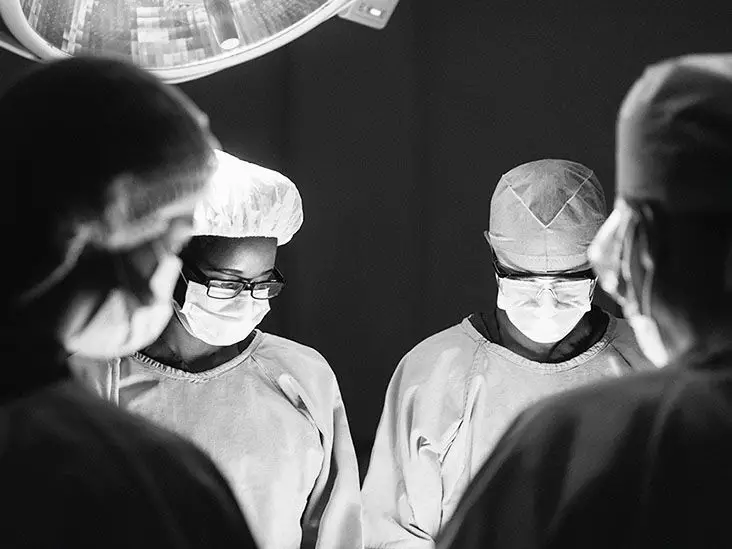Thyroid cancer, while not as prevalent as other forms, presents a profound challenge. Characterized by abnormal growth of cells in the butterfly-shaped thyroid gland, it can manifest in diverse forms. From the relatively benign and treatable papillary thyroid carcinoma to the more aggressive medullary and anaplastic types, the range of possibilities underscores the complexity of diagnosis and treatment. Notably, around 45,000 Americans receive a diagnosis of thyroid cancer each year, indicating a pressing need for awareness and timely medical attention.
Risk factors for thyroid cancer can vary widely. Known contributors include genetic predispositions, previous exposure to radiation, and existing thyroid conditions. The typical age of diagnosis is around 51, highlighting the need for vigilance in middle-aged populations. Symptoms often emerge subtly and can encompass a noticeable lump in the neck, difficulty swallowing, changes in voice, or a persistent cough. Recognizing these signs can be vital for prompt intervention, enhancing the likelihood of successful treatment.
The Role of Surgery in Treatment
When it comes to treating thyroid cancer, surgery is often the frontline response, aimed primarily at eradicating cancerous growths. The surgical procedure, commonly known as thyroidectomy, can involve either the complete removal of the thyroid gland or just a portion of it, contingent upon factors such as the cancer’s type, size, its location, and whether metastasis has occurred. Surgeons perform these operations under general anesthesia, which ensures that patients are both unconscious and free from pain during the procedure.
Advancements in surgical techniques have significantly improved patient outcomes. Surgeons may opt for minimally invasive approaches that utilize smaller incisions, thereby facilitating quicker recovery while also minimizing visible scarring. The expertise of the surgical team is critical; their ability to identify and preserve the recurrent laryngeal nerve, which controls vocal cord function, can drastically affect a patient’s postoperative quality of life, reducing the risk of voice changes.
Preparing for Surgery: What to Expect
The preparation for thyroid cancer surgery involves a multifaceted approach. Patients undergo a thorough evaluation that includes physical examinations, blood tests to assess thyroid function, and imaging studies like ultrasounds or CT scans to get a clear understanding of the cancer’s extent. A fine needle aspiration biopsy is often employed to confirm the diagnosis, allowing for a tailored surgical plan.
Before the surgery, patients receive comprehensive counseling from their healthcare team about the procedure, potential complications, and what to expect in the recovery phase. Instructions regarding medication adjustments and fasting are crucial to ensure safety and minimize risks during surgery. Ensuring that a support system is in place post-discharge is vital, as patients will need assistance with daily tasks, particularly in the initial recovery period following their release from the hospital.
The Surgical Experience
During thyroidectomy, surgeons take special care to minimize the impact on surrounding structures. An incision is made strategically at the front of the neck, usually along natural skin creases to enhance cosmetic outcome. The surgical team carefully removes the cancerous parts of the thyroid, while also inspecting lymph nodes for any signs of metastasis. This thoroughness is crucial; the procedure could include placing a drain to prevent fluid accumulation, which is a common post-surgical concern.
Moreover, the operation often leverages nerve monitoring technology. This sophisticated approach allows surgeons to safeguard the recurrent laryngeal nerve, further reducing the risk of unintended vocal changes post-surgery.
Recovery and Long-Term Considerations
Recovering from thyroid cancer surgery is a gradual process, typically divided into multiple phases. For the first week, focus is on rest, effective pain management, and gentle neck movements. As the healing progresses over weeks two to three, patients may gradually return to their regular activities, with an emphasis on avoiding heavy lifting. By weeks four to six, many individuals can resume their full range of activities, including exercise, although modifications may be necessary based on personal recovery.
It’s crucial to note that for patients undergoing total thyroidectomy, lifelong hormone replacement therapy becomes a necessity. This entails regular monitoring and adjustments to hormone levels through blood tests, emphasizing the importance of ongoing medical supervision following surgery.
Thyroid cancer surgery stands as a pivotal treatment option, offering hope for those grappling with this challenging diagnosis. The procedure has the potential to not only mitigate immediate health concerns but also lay the groundwork for a return to a fulfilling life post-recovery. However, the journey through diagnosis, treatment, and recovery is not just a medical procedure; it is an empowering experience that can redefine a patient’s approach to health and wellness.


Leave a Reply